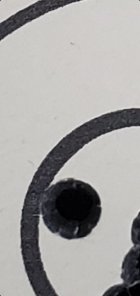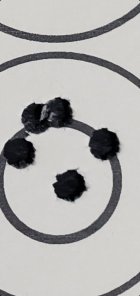I'd double check your neck and chamber clearance dimensions.@Bill Norris test made me want to test a 0.323” bushing. I had already tested 0.325 and 0.324 bushings, wth 0.324 being the best. Today I compared 0.324 and 0.323.
30-BR, 0.332 Neck, 17 twist Krieger, long range stock (15.2 lbm total weight).
ARC Nucleus action with a Trigger Tech Diamond trigger at ~ 10 oz.
Lapua 6BR brass skim turned to 0.012” max thickness.
Brass annealed after every firing, has been shot 12 times.
35.5 gr VV N130, 118 gr 7 ogive Bibs, CCI 450, seated 0.004” jamb, using a Wilson seater.
70 F, no mirage, 7 mph switching tail wind.
I shot four, 4-shot groups so I wouldn’t have to process my brass again before my next match. The 0.324” bushing is still the king for my rifle, long live the brass!
.012x2=.024
Plus minimum of .308 bullet diameter=.332...or zero clearance.













